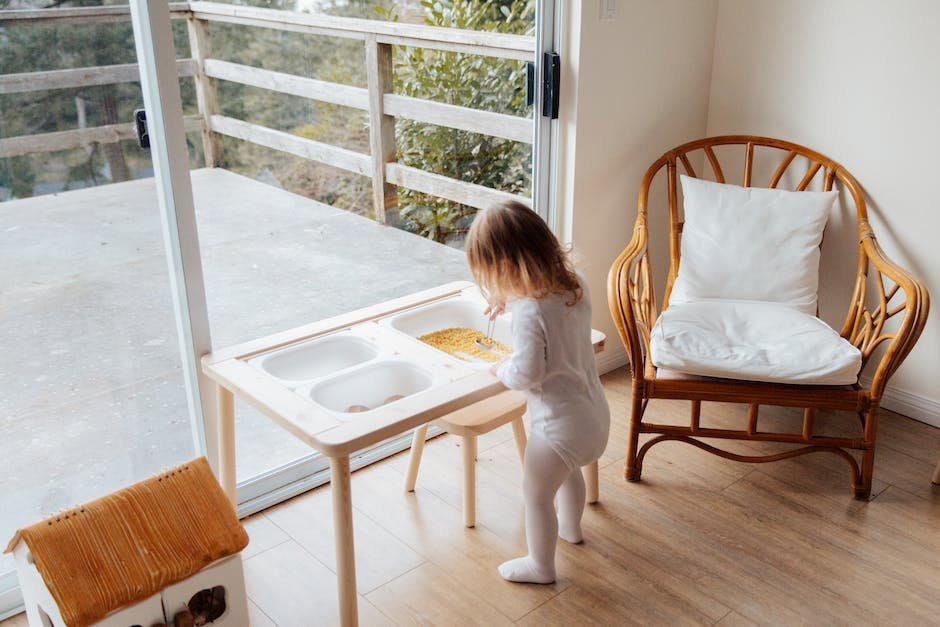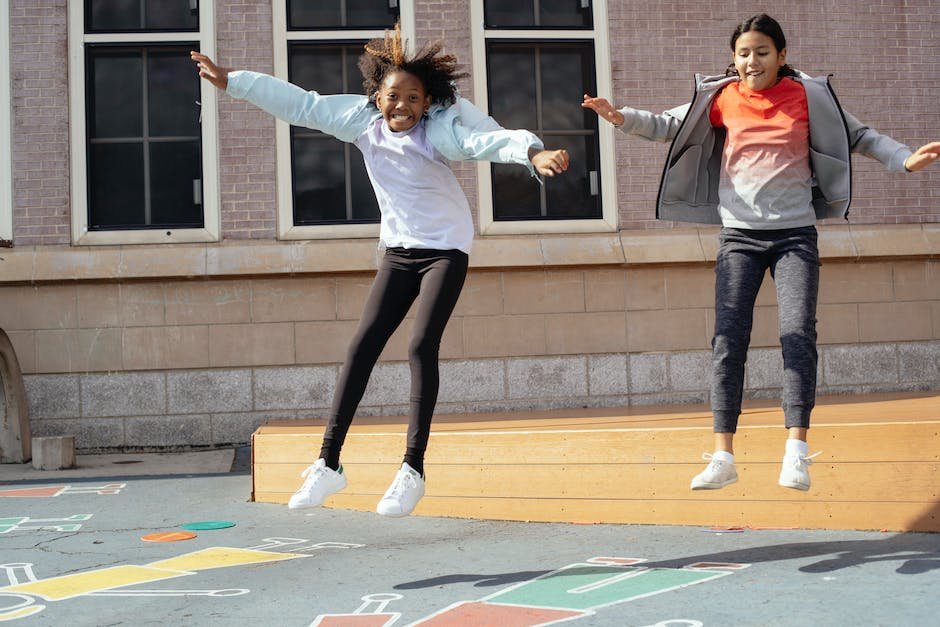
The complex tapestry of sensory experiences often becomes knotty and intricate in the lives of individuals living with Autism Spectrum Disorder. Beyond the stereotypical assumptions that society often predicates, the world of autism bursts with nuances interwoven around the coordinates of the five primary senses. This not only alters the individual perception but also affects the behavioral responses to the plethora of sensory inputs available in the environment. Every individual experience is unique, varying from hypersensitivity to certain stimuli to hyposensitivity to others. Thus, understanding Autism’s sensory challenges and their consequent impact on daily life activities becomes imperative for creating an inclusive society that respects and celebrates diversity.
Understanding Autism’s Sensory Challenges
Exploring Sensory Challenges Faced by Autistic Children
Every child is unique, bringing their own set of fantastic skills, talents, and challenges into the world. When a child has autism, they might experience the sensory parts of the world a bit differently than others. As parents and caregivers, understanding these extra sensory challenges can help cultivate a better environment and a more nurturing setting for these amazing youngsters.
First off, what are sensory challenges? Well, they’re essentially difficulties in processing and responding to sensory information like sight, sound, taste, smell, touch, and movement. For an autistic child, these challenges can manifest as being over-responsive or under-responsive to sensory inputs. In simpler terms, such a child might be very sensitive to certain sounds or might not react at all to others.
One of the most common sensory challenges in autistic children is hypersensitivity. This manifests as an intense, sometimes overwhelming, response to sensory experiences that others might find normal or even overlook. For example, the hum of a refrigerator or the flickering of fluorescent lighting, which most of us barely notice, might be immensely distressing to a hypersensitive child.
On the other end of the spectrum is hyposensitivity, where a child might be under-responsive or oblivious to sensory input. This could mean not flinching at a sudden, loud noise, or not feeling physical pain from a fall or injury. It’s not that they are necessarily unbothered; they might just perceive these inputs differently.
Then there’s the world of tactile sensitivity which involves touch, texture and temperature. Some children with autism can find wearing certain fabrics uncomfortable, or even painful, while others might show a fascination for specific textures. Bathing or teeth-brushing can also become herculean tasks for parents when a child is touch-sensitive.
Autistic children may also face challenges with vestibular senses – these are rooted in balance and spatial orientation. They can experience difficulty coordinating movement, judging distance or navigating a room filled with obstacles.
Besides these, challenges might extend into the realms of smell, taste, and sight too, often with varied degrees of sensitivity. Strong odors or specific food textures might be off-putting, or a child might be drawn specifically to bright, bold colors.
In pushing through these challenges, early intervention is key. Meeting with an occupational therapist who specializes in sensory integration therapy can work wonders. However, it’s also about being intuitive, understanding the triggers, and being experimental at home. Creating safe spaces, using sensory toys, introducing gentle exercises for motor skills, maintaining regular routines – these can all significantly help a child with sensory challenges.
Remember, every child’s autistic journey is unique. What might work for one family might not work for another. By exploring and understanding these sensory challenges, mindful and compassionate support can be provided to the little ones on their journey. Armed with knowledge and love, every hurdle can be crossed, every challenge faced head on. After all, isn’t that what family is all about? Embracing differences, nurturing in spite of hurdles, and growing together in love and understanding. Each child, each family, and each day brings something new, something challenging, and something beautiful into the world. Especially when it’s peppered with the sprinkle of autism.

How Sensory Challenges can affect Daily Life
Understanding the Effects of Sensory Challenges on a Child with Autism
Engaging with the world can be uniquely demanding for a child with autism due to sensory challenges. But just how does it impact their day-to-day life along with their family members? It’s critical to recognize the significant changes that occur within the familial structure. Harnessing this understanding, family members can positively contribute to the child’s growth and development, while simultaneously nurturing a loving, supportive home environment.
The ripple effect of sensory challenges affects not only the child but also their parents and siblings. Family outings, for instance, may need meticulous planning and preparation to alleviate potential sensory overload. Taking a trip to a crowded park or a noisy restaurant might trigger discomfort for the child. This doesn’t mean such activities are impossible – they just need to be managed differently. Employing proactive measures such as visiting during less busy hours or having noise-cancelling headphones at hand can go a long way in facilitating enjoyable family outings.
These sensory issues also present themselves during mealtime—an intimate and important family gathering. Children with autism might display strong preferences for certain textures and flavors, or even specific colors of food. They may resist trying new food items, often adhering to a restrictive diet. It’s essential to approach these situations with understanding and patience. Gradually introducing new tastes and textures can help broaden their palate.
Developing communication skills in children with autism can also be influenced by sensory challenges, affecting their social interactions both at home and outside. Sudden or loud noises may cause distress, causing the child to withdraw from the conversation or activity. A gentle, calm environment can be instrumental in fostering better communication.
Furthermore, addressing the child’s sleep schedule is integral. Sensitivity to certain types of fabric or light can lead to sleep disruptions, affecting their mood and behavior the next day. The entire family might need to adjust their bedtime routines to cater to the child’s senses. Soft, calming colors in the bedroom and breathable fabric for nightwear can be beneficial for their sleep hygiene.
Lastly, remember, every child with autism is unique. Their sensory challenges range across a vast spectrum – no two experiences are identical. Identifying a child’s specific sensory sensitivities can be an illuminating journey, filled with unique challenges and extraordinary triumphs. Autism remarkably influences the family’s dynamics, transforming the home into a space of extraordinary empathy, patience, and unconditional love. While this transformation may come with unforeseen changes and adaptations, it paves the way for a nurturing environment where every family member, especially an autistic child, can blossom and thrive.

Strategies and Tools: Supporting Sensory Needs
Article:
Supporting the Sensory Needs of a Child with Autism: Helpful Strategies and Tools
Parenting a child with autism isn’t always easy, but it is certainly fulfilling. As any parent of an autistic child can attest, understanding and supporting their sensory needs requires patience, empathy, and abundant love. With a focus on that, let’s delve further into the strategies and tools that can help support these unique sensory needs.
Parenting a child with autism often means confronting and navigating certain challenges associated with sensory sensitivities. It’s essential to recognize the impact these sensory challenges can have on the entire family, with implications extending beyond the child themselves to parents and siblings. By developing empathy, patience, and greater understanding, families can come together to address these sensitivities.
Family outings and activities can sometimes trigger sensory overloads in children with autism. These instances can be managed better by careful planning and understanding the child’s sensory triggers. Try to visit quieter places or plan activities during off-peak times, always keeping an exit strategy in place, should a quick departure become necessary. Always remember, preparation is key, not just for the child but also for the entire family.
Children with autism often face sensory challenges during mealtime. These mealtime battles can stem from issues with food textures, tastes, and even colors. Having a range of food options, understanding their preferences, and making gradual changes can go a long way in supporting their dietary needs. Remember, a cheerleader’s role in these instances can work wonders in getting them to try something new.
Sensory challenges can also influence the communication skills and social interactions of a child with autism. Encouraging play and interaction using sensory-friendly toys and objects can aid in developing these crucial skills. Interactive games and tools, such as texture sorters or sensory bins, can also serve as excellent mediums for them to engage healthily and safely.
Sleep disruptions are another area where sensory sensitivities can significantly interfere. Adjusting bedtime routines with sensory needs in mind can make a world of difference. Consider using sensory-friendly bedding, lower lighting, and noise control, or incorporating calming activities like reading or listening to soothing music, to create a tranquil environment conducive to better sleep.
It is vital to always remember that every child with autism is beautiful in their uniqueness, and this includes their sensory sensitivities. It can be a learning curve, no doubt, but with patience, empathy, and a few key strategies in place, families can successfully navigate these challenges.
Ultimately, the home should be a sanctuary transformed by empathy, patience, and unconditional love. It should be an environment where differences are celebrated, and everyone is encouraged to grow together in their journey of acceptance and adaptation. So embrace the mess, love ardently, and remember that supporting the sensory needs of a child with autism is not just about managing challenges, but also about celebrating their uniqueness. Together, we learn, we grow, and we love.
Creating an Autism-Friendly Environment
Creating an Autism-Friendly Environment: Shaping the Learning Landscape
Supporting an autistic child’s development and comfort often goes beyond limiting sensory overloads. An empathetic, loving environment fosters growth and ultimately paints a nurturing backdrop for their unique journey. Therefore, taking the time to understand and adapt to their varying needs is paramount – and this transcends into creating autism-friendly environments, specifically at home and school.
While individual needs may vary greatly among children with autism, incorporating changes in the surroundings can certainly make a world of difference. With a few strategic steps, parents can shape a child’s environment to meet their sensory needs without diminishing their opportunities to experience, learn, and grow.
The school environment, in particular, plays an essential role in shaping the learning and development dynamics. As such, teachers should create a flexible routine that caters to the needs of autistic children. This could mean incorporating ‘quiet times’ throughout the day, designating an area for kids to retreat when they feel overwhelmed, and using noise-cancelling headphones during loud activities. It’s equally important to minimize distractions, as children with autism often find it hard to concentrate on tasks with excess noise or visual stimuli around.
Academic success is certainly important; however, for kids with autism, it’s often the social aspects of school that prove to be the most challenging. Therefore, fostering an inclusive social environment is intrinsic. This includes training peers about autism to promote understanding and acceptance, introducing structured social activities that cater to an autistic child’s interests, and providing constructive feedback to help them learn and grow from their interactions.
At home, the transformation should cater to sensory needs while also promoting the growth of functional and communication skills. Parents should also consider creating visual labels for different rooms and items around the house to help a child with autism navigate their environment more easily. Moreover, using visual schedules can help to establish a supportive routine.
Activities of daily living are also critical points of focus. Be it teeth-brushing, bathing, or dressing, these routines can be improved with the use of pictorial aids, timers, or social stories that make the process less overwhelming and more familiar.
The family as a whole must also play an integral role in creating this environment. Acknowledging the experiences of other siblings, considering their inputs, and ensuring they understand the nature of their autistic sibling’s needs fosters an inclusive and supportive family dynamic.
Remember, while being understanding and patient, it’s vital to also celebrate and embrace the milestones, big or small. Autism may come with its unique challenges, but it also brings a world filled with remarkable individuals who can teach invaluable lessons about empathy, acceptance, and unconditional love. Ultimately, it’s all about creating a space where a child with autism feels safe, heard, loved, and cherished—just like their peers.
Simply put, by fostering an environment that radiates empathy, patience, and acceptance – parents, educators, and families can together create a world in which children with autism feel both welcomed and understood.

Building Emotional Resilience in Families with Autism
Speaking from a place of love, as parents, we are the cornerstone of families, particularly those blessed with autistic children. Emotional resilience and steadfastness become invaluable traits, helping to keep our family bond stronger than any challenges we may face. In light of this, it can be of immense help to delve into certain issues and strategies that foster emotional resilience within our families as we journey through life with autism.
Let’s begin with the vital role of maintaining open, honest communication. Communicating the range of emotions we experience is powerful and facilitates the growth of emotional resilience. This applies to everyone in the family – the child with autism, parents, and siblings. While it may seem challenging for the child with autism to articulate emotions due to sensory challenges, a customized, simple communication system might do wonders. Techniques such as utilizing picture cards or creating a designated ‘feelings chart’ offer visual aids that assist children with autism to better understand and communicate their emotions.
Recognizing the emotional needs of siblings is equally crucial. They too ride on the same emotional roller-coaster. Acknowledging their feelings and fostering an environment for open dialogues where everyone’s emotions are validated can be instrumental in augmenting the emotional resilience of your family unit. Siblings of children with autism might be enriched from specialized support groups where they can share experiences, express feelings, and learn that they’re not alone.
Professional support cannot be understated either. Clinical professionals, therapists, and counselors trained in working with families navigating autism can provide additional tools and strategies to improve emotional resilience. They help families to understand feelings and emotions, and their association with autism, thereby fostering an environment of greater empathy and love.
Educational resources, both online and offline, can provide a wealth of knowledge. Read, research, and educate yourselves about autism and the various strategies to help your children thrive. Knowledge is empowering, and the more we understand about autism, the better we can help our children and our family remain resilient amid challenges.
Always remember: you’re not alone. As parents and families navigating life with autism, we have an unprecedented loving community by our side. Networking with other families who are also navigating the journey of autism can be comforting and encouraging. Sharing experiences, exchanging ideas, and understanding that others are also walking a similar journey can be a beacon of hope and a source of strength. Local support groups and online communities can be valuable platforms for such interactions.
Last h5, preserve your resilience by taking care of yourself. Parents, your well-being matters! Emotional burnout is real, and it’s important to take time out for self-care activities to recharge. It isn’t selfish—it’s necessary. Whether it’s a quiet walk in the park, savoring a hot cup of coffee, practicing yoga, or simply enjoying a quiet moment of solitude, do what helps you rejuvenate.
Recount the positives each day. Celebrate your child’s accomplishments, however little they might be. Every tiny victory, each precious moment, is a testament to the resilience that binds your family.
In conclusion, emotional resilience is not a destination but a journey. It evolves with each joyful triumph and every tearful setback. We staunchly stand as the pillars for our children, guiding, teaching, and loving, all the while being patient and steadfast. Remember, every storm is followed by a rainbow. The journey may be rugged at times, but we traverse it together, as resilient families, fortified by love.
Families journeying with autism often experience an emotional roller-coaster. However, through understanding and patience, emotional resilience can be developed and nurtured within the family. This evolution is instrumental in cultivating a positive and loving environment that encourages the holistic growth and development of children living with autism. As unique as each child is, so should be our approach towards equipping and empowering them. Alongside the necessary interventions and tools, the strength of emotional resilience in families serves as the steadfast foundation for enabling a satisfying and happy life for every member of the family. Hence, as we include the narratives of those families living with autism, our understanding becomes enriched, inspiring us to ensure a more accepting, and empathetic society.




